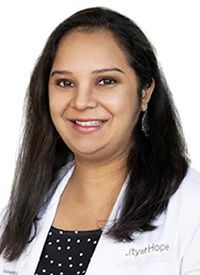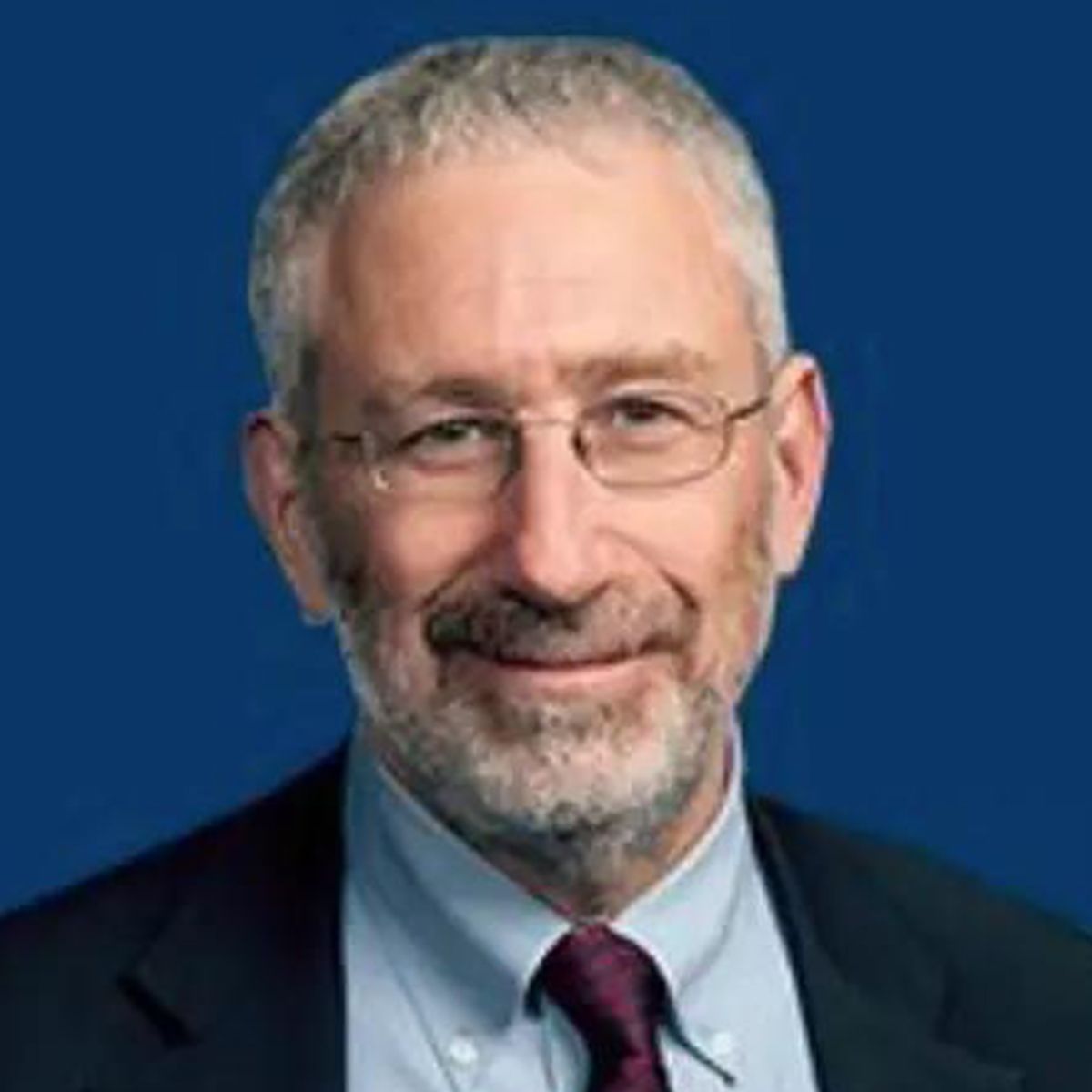Article
Real-World Analysis Supports Use of Brexu-Cel in Relapsed/Refractory MCL
Author(s):
The real-world efficacy and safety of brexucabtagene autoleucel were similar to the outcomes seen in the phase 2 ZUMA-2 trial, regardless of patients’ treatment history, according to results from a real-world subgroup analysis of patients with relapsed/refractory mantle cell lymphoma.
Swetha Kambhampati, MD

The real-world efficacy and safety of brexucabtagene autoleucel (brexu-cel; Tecartus) were similar to the outcomes seen in the phase 2 ZUMA-2 trial (NCT02601313), regardless of patients’ treatment history, according to results from a real-world subgroup analysis of patients with relapsed/refractory mantle cell lymphoma (MCL).1
The findings from this analysis, which were presented at the 2023 ASCO Annual Meeting, demonstrated that at a median follow-up of 12.0 months (range, 0.0-25.3), the overall response rate (ORR) was 90% in the real-world population of patients who received brexu-cel, including a 78% complete response (CR) rate.
In 2020, the FDA approved brexu-cel for adult patients with relapsed/refractory MCL. This regulatory decision was based on findings from ZUMA-2, in which, at a 3-year follow-up, brexu-cel elicited an ORR of 91%, including a CR rate of 68%. The median duration of response (DOR) was 28.2 months, the median progression-free survival (PFS) was 25.8 months, and the median overall survival (OS) was 46.6 months.2 In the primary analysis of ZUMA-2, the rates of grade 3 or higher cytokine release syndrome (CRS) and neurologic effects were 15% and 31%, respectively.3
“Clinical trials often have selective eligibility criteria, so it’s important to evaluate the real-world safety and efficacy outcomes of brexu-cel,” Swetha Kambhampati, MD, of City of Hope in Duarte, California, said in an interview with OncLive®. This analysis included 380 patients with relapsed/refractory MCL from 84 centers in the Center for International Blood and Marrow Transplant Research registry who were treated with brexu-cel between July 2020 and December 2022.1
The efficacy end points of this study were ORR, CR rates, partial response (PR) rates, DOR, PFS, OS, and relapse or progressive disease (PD). Key safety end points included CRS, immune effector cell–associated neurotoxicity syndrome (ICANS), prolonged thrombocytopenia, prolonged neutropenia, infections, non-relapse mortality (NRM), and causes of death.
At baseline, the overall population had a median age of 66.8 years (range, 34.1-84.9). In total, 6% (n = 21) of patients had an ECOG performance score (PS) of 2 or higher, 44% (n = 97) of patients had a Ki-67 proliferation index of at least 50%, 20% (n = 40) of patients had TP53 or 17p deletion, and 5% (n = 17) of patients had extranodal central nervous system (CNS) involvement. Patients had a median of 4 (range, 1-12) prior lines of therapy. Additionally, 46% (n = 170) of the total population had received bridging therapy of any type.
In the patients with prior bendamustine (n = 211), the median age was 69.2 years (range, 44.2-84.9). In total, 6% (n = 12), 37% (n = 44), 16% (n = 16), and 6% (n = 11) had an ECOG PS of at least 2, a Ki-67 proliferation index of at least 50%, TP53 or 17p deletion, and extranodal CNS involvement, respectively, and 48% (n = 99) had received prior bridging therapy. These patients had a median of 4 (range, 1-12) prior lines of therapy. In the patients with no prior bendamustine, the median age was 64.3 years (range, 34.1-83.7), and 6% (n = 9), 52% (n = 53), 25% (n = 24), and 4% (n = 6) had an ECOG PS of at least 2, a Ki-67 proliferation index of at least 50%, TP53 or 17p deletion, and extranodal CNS involvement, respectively, and 44% (n = 71) had received prior bridging therapy. These patients had a median of 3 (range, 1-10) prior lines of therapy.
The median age of the patients who had received prior autologous stem cell transplant (ASCT; n = 114) was 65.4 years (range, 34.1-82.3). Of these patients, 6% (n = 7), 37% (n = 23), 12% (n = 6), and 7% (n = 7) had an ECOG PS of at least 2, a Ki-67 proliferation index of at least 50%, TP53 or 17p deletion, and extranodal CNS involvement, respectively, and 47% (n = 52) had received prior bridging therapy. These patients had a median of 4 (range, 1-12) prior lines of therapy. The patients with no prior ASCT had a median age of 67.7 years (range, 34.3-84.9), and 6% (n = 14), 47% (n = 74), 23% (n = 34), and 4% (n = 10) had an ECOG PS of at least 2, a Ki-67 proliferation index of at least 50%, TP53 or 17p deletion, and extranodal CNS involvement, respectively, and 46% (n = 118) had received prior bridging therapy. These patients had a median of 3 (range, 1-11) prior lines of therapy.
In the patients with prior BTK inhibitors (n = 329), the median age was 66.9 years (range, 34.1-84.9). Additionally, 7% (n = 20), 47% (n = 88), 19% (n = 32), and 6% (n = 17) had an ECOG PS of at least 2, a Ki-67 proliferation index of at least 50%, TP53 or 17p deletion, and extranodal CNS involvement, respectively, and 50% (n = 159) had received prior bridging therapy. These patients had a median of 4 (range, 1-12) prior lines of therapy. In the patients with no prior BTK inhibitors (n = 51), the median age was 65.5 years (range, 44.2-83.7), and 2% (n = 1), 28% (n = 9), 25% (n = 8), and 0% of patients had an ECOG PS of at least 2, a Ki-67 proliferation index of at least 50%, TP53 or 17p deletion, and extranodal CNS involvement, respectively, and 23% (n = 11) had received prior bridging therapy. These patients had a median of 2 (range, 1-7) prior lines of therapy.
The ORRs were 90% and 92% in patients with prior and no prior BTK inhibitors, respectively, with CR rates of 78% and 83%, respectively. The ORRs were 89% and 92% in patients with prior and no prior bendamustine, respectively, with CR rates of 76% and 81%, respectively. The ORRs were 91% and 90% in patients with prior and no prior ASCT, respectively, with CR rates of 82% and 77%, respectively. The ORRs were 94% and 89% in patients with 1 to 2 and at least 3 prior lines of therapy, respectively, with CR rates of 88% and 76%, respectively.
The median DOR was 21.7 months (95% CI, 14.8-not estimable [NE]). The estimated 6- and 12-month DOR rates were 79% and 64% in patients who achieved a CR or PR, respectively, and 84% and 69% in those who achieved a CR, respectively.
The median PFS was 16.5 months (95% CI, 13.0-NE), and the estimated 6- and 12-month PFS rates were 75% and 61%, respectively. The median OS was 16.8 months (95% CI, 14.5-NE), and the estimated 6- and 12-month PFS rates were 86% and 74%, respectively.
The median time to relapse or PD was 24.0 months. The estimated 6- and 12-month relapse/PD rates were 19% and 31%, respectively.
Patients who had received 1 to 2 prior lines of therapy had a higher CR rate than those who had received 3 or more prior lines (odds ratio [OR], 2.10; 95% CI, 1.01-4.34). Patients with prior ASCT had improved PFS compared with those without prior ASCT (HR, 0.56; 95% CI, 0.35-0.88). These patients also had improved time to relapse or PD vs those with no prior ASCT (HR, 0.57; 95% CI, 0.34-0.96).
In the overall population, the rate of any-grade CRS was 88% (n = 335), and the rate of grade 3 or higher CRS was 10%. The rate of any-grade ICANS was 60% (n = 228), and the rate of grade 3 or higher CRS was 28%. The median time to CRS onset was 5 days (range, 1-46), and the median time from onset to resolution was 6 days (range, 1-176). The median time to ICANS onset was 7 days (range, 1-31), and the median time from onset to resolution was 8 days (range, 1-98). Of the entire study population, 76% (n = 290) and 61% (n = 233) of patients received tocilizumab (Actemra) or corticosteroids for CRS and/or ICANS. By 3 weeks from onset, CRS had resolved in 95% of patients (95% CI, 92%-97%), and ICANS had resolved in 78% of patients (95% CI, 72%-83%).
Other adverse effects included prolonged neutropenia (6%), prolonged thrombocytopenia (21%), subsequent neoplasms (6%), and infections (41%), consisting of bacterial (18%), viral (26%), and fungal (4%) infections.
The day 100 NRM rate was 4%. The 1-year NRM rate was 7% excluding COVID-19–related deaths and 8% overall. In total, 23% (n = 89) of patients died from primary disease (14%), malignancy (< 1%), CRS (< 1%), neurotoxicity/ICANS (1%), chronic graft-versus-host-disease (< 1%), bacterial infection (2%), COVID-19 (1%), organ failure (1%), hemorrhage (< 1%), other causes (2%), and unreported causes (< 1%).
Patients who had received prior bendamustine had a reduced risk of grade 3 or higher ICANS (OR, 0.50; 95% CI, 0.30-0.84) compared with those with no prior bendamustine, as well as an increased risk of prolonged thrombocytopenia (OR, 1.98; 95% CI, 1.11-3.53). Patients who had received 1 to 2 prior lines of therapy had a higher risk of grade 3 or higher CRS vs those with 3 or more prior lines (OR, 2.26; 95% CI, 1.11-4.63).
“Exposure to prior treatments like ASCT, BTK inhibitors, and bendamustine didn’t really affect safety and efficacy, but there may be some signal in patients who received it in earlier lines of therapy having higher response rates and an increased likelihood of achieving CR, which needs further evaluation,” Kambhampati concluded in the interview.
Disclosures: Dr Kambhampati has no relationships to disclose.
References
- Kambhampati S, Ahmed N, Hamadani M, et al. Real-world outcomes of brexucabtagene autoleucel (brexu-cel) for relapsed or refractory (R/R) mantle cell lymphoma (MCL): a CIBMTR subgroup analysis by prior treatment. J Clin Oncol. 2023;41(suppl 16):7507. doi:10.1200/JCO.2023.41.16_suppl.7507
- Wang M, Munoz J, Goy A, et al. Three-year follow-up of KTE-X19 in patients with relapsed/refractory mantle cell lymphoma, including high-risk subgroups, in the ZUMA-2 study. J Clin Oncol. 2023;41(3):555-567. doi:10.1200/JCO.21.02370
- Wang M, Munoz J, Goy A, et al. KTE-X19 CAR T-cell therapy in relapsed or refractory mantle-cell lymphoma. N Engl J Med. 2020;382(14):1331-1342. doi:10.1056/NEJMoa1914347








